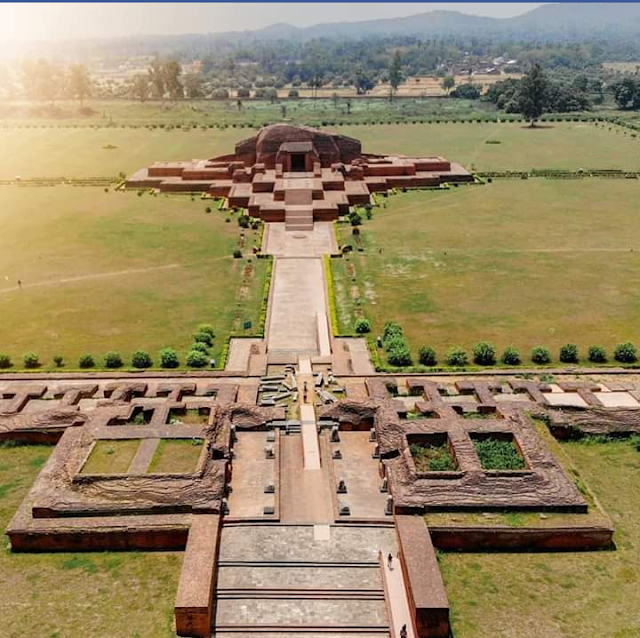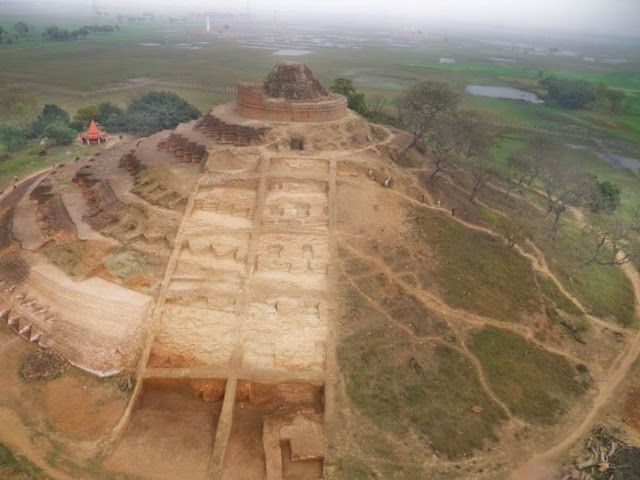One of the largest ancient rock-cut caves temples in the world,
Ellora caves spread over a distance of 1.2miles (2km),the temples were cut from basaltic cliffs and have elaborate facades and interior walls. The
ellora complex was designated a
UNESCO world heritage site IN 1938.The Hindu caves are the most dramatic in design, and the
Buddhist caves contain the simplest ornamentation.
Ellora caves history:
The Ellora caves chiseled into perfection between the
4th and 9th century belongs to the buddhist ,hindu, and jain faiths. Ellora caves built during 600 to 1000 CE. Ellora caves lie in the sahayadri mountains in
aurangabad, Maharashtra and is about 103 km from ajanta caves.
Ellora caves comprises Hindu,buddhist, and jain temples and about 100 caves. 12 buddhist caves dated from about 200BCE,the 17 Hindu temples dated from about 500 to 900CE, and about 5 the jain temples date from about 800 to 1000. These caves constructed near each other stand for the harmony and solidarity among all faiths and beliefs.
The Hindu and the buddhist caves were built during the
Rashtrakuta dynasty, and the jain caves were built by the yadav dynasty. The major construction period for the Ellora caves:
early Hindu period from 550 to 600CE, buddhist period from 600 to 730CE, the jain and the Hindu period lasting from 730 to 950CE.Ellora caves Architecture: Caves(13-29):All the caves are chiseled about 4th to 9th century.the inscription on the walls of the ellora caves date back to the 6th century and a famous one is the Rastrakuta Dantidurga on the mandapa of caves 15 inscribed during 753 to 757AD.there are over100 caves at the site ,all excavated from the basalt cliffs in the charanandri hills,34 of which are open to public.
the single largest monolithic rock excavation in the world, the kailasha temple, a chariot shaped monument dedicated to lord Shiva.it was built during 757- 783AD by krishna l who was the uncle of dantidurga.
Hindu monuments: kailashnath temple the early hindu caves were dedicated to shiva .caves 14,15,16 were built in the rastrakuta period. About 9 cave temples were excavated early in the 6th century.many caves were completed in the 8th century with the support of king krishna l.
The common feature of these cave temples was a rock- cut linga- yoni within the core of shrine with each being surrounded by a space for parikrama.The waterfall is visible from a rock curved balcony to the south and has been described as" falling over great Shiva's brow".cave 21 is also know as rameshwar lena, is another early excavation credited to kalachuri dynasty. It also has a number of unique pieces,such as those depicting the story of goddess parvati's pursuit of Shiva.carving depicting parvati and Shiva at leisure,
parvati's wedding to Shiva.The dancing of Shiva and kartikeya have been found in other caves.Cave no.16 known as the
kailasa temple most famous of temple in ellora caves.
Cave no. 15 is known as THE DASHAVATARA TEMPLE.Cave 14- is RAVAN KI KHAI
Cave 22-is NILKANTHA
THE BUDDHIST MONUMENTS: caves(1-12):these caves are located on the southern side and were built between 630-700CE.
Caves 1-5 in frist phase 400-600 and
cave6-12 in second phase 650-750.eleven out of twelve buddhist caves are viharas or monastery with prayer hall. The monastery caves have shrines including carving of gautam buddha,bodhisattva and saints. Cave 5,10,11,12 are architecturally important Buddhist caves.
Caves 5 is unique among all ellora caves as it was designed as a hall with the pair of parllel refractorie benches in the centre and the buddhist statute in rear.Cave 10 is a major player hall of Buddhism.Caves 11 is of the kanheri are only two buddhist caves
Arranged in such way. Cave11and 12 are three storied Mahayana buddhist cave. Buddhist cave no.10 is known as vishwakarma caves built about 650CE
At the heart of this cave a 15 foot statue of buddha are seated in preaching pose.
 |
| Vishwakarma caves |
Jain monument: At the north end of ellora there are five jain caves belonging to digambara section.which are excavated in 9th and early 10th centuries. All jain caves are smaller then buddhist and Hindu caves.















Comments
Post a Comment